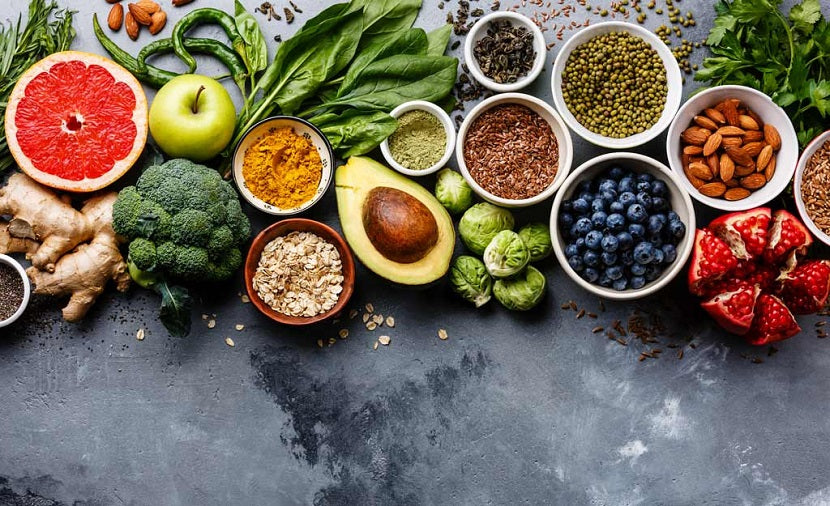Are You Exposed to Obesogens?
By Lauren Jane

What are obesogens?
Obesogens are environmental toxins or chemicals that disrupt fat metabolism and cause weight gain and there are many reasons why we should be concerned about them.
First, they’re everywhere around us in the modern world we live in. This means we’re constantly exposed to these obesogens whether we like it or not.
Second, they resemble and act just like the natural chemicals in our body, particularly those that signal hormones responsible for energy storage.
These are the same hormones that guide our body on how many calories to burn or store as fuel for our day-to-day activities, as well as where to store them as adipose tissue (fat).
A woman’s glandular system is highly sensitive and when it continually receives mixed signals, maintaining hormonal balance can be very difficult. The interference of obesogens with our normal physiology only makes matters worse and often results in weight gain for many women.
Where are obesogens found?
We all know that people who smoke cigarettes, drink alcohol and lead unhealthy lifestyles have the highest exposure to environmental toxins. However, everyone else may come in contact with obesogens through the food we eat, the water we drink, the air we breathe, and even the personal care and household products we buy. They may even be present in your living room rug and furniture!
Obesogens are lurking everywhere!
Here are just a few examples of everyday stuff we consume or use that may contain obesogens:
- Low-fat and sugar-free foods
- Commercially raised meat and dairy products
- Highly processed and preserved foods
- Plastic water bottles and storage containers
- Makeup and skincare products
- Shampoos and hair care products
- Soaps, detergents and other laundry products
- Dry cleaning agents
- Household cleaners
- Deodorants
- Flame retardants applied to furniture and furnishings including mattresses, carpets, curtains, and fabric blinds
The chemicals found in the products listed above range in type but generally include xenoestrogens, diethylstilbestrol (DES), Bisphenol A (BPA), tributyltin (TBT) and phthalates, all of which are endocrine disruptors, meaning they DISRUPT your hormone system.
What research says about obesogens
Studies have shown that exposure to EDCs and obesogens during critical periods of development may result in adverse health effects that may not be apparent until much later in life. These include obesity and other diseases and disorders associated with weight gain such as cardiovascular disease, liver disease, diabetes, and arthritis, among others.
For instance, the development of obesity and hyperlipidemia (high blood cholesterol) has been attributed to exposure to BPA, one of the chemicals we incidentally intake during the critical early life period. More specifically, BPA has been shown to affect glucose transport in adipocytes and at environmentally relevant doses, may inhibit the release of a key adipokine that protects humans from metabolic syndrome.
Tributyltin (TBT) has also been identified as one of the environmental chemicals that lead to excessive accumulation of adipose tissue. Furthermore, chemical pesticides found in food and water – specifically atrazine and dichlorodiphenyldichloroethylene (DDE) – have been associated with increases in body mass index (BMI) and insulin resistance.
5 top ways to eradicate obesogens
1. Make your home a low-tox environment.
Do a chemical cleanout. There are many inexpensive eco-friendly brands now available, with all-natural cleaning products, makeup and sanitary items easily found at local supermarkets.
2. Avoid heating with plastic containers or cling wrap.
Opt for beeswax wrap to cover food and use Pyrex bowls to heat food.
3. Invest in a glass or stainless steel drink bottle.
Besides protecting yourself from toxins, you'll be doing a favour for mother nature! Also, be sure to clear out those old plastic water bottles lying around in your car.
4. Support your detoxification pathways.
This means your skin, liver, kidneys, gut, lungs and bowel. How?
- Drink plenty of water daily.
- Eat organic or biodynamic where possible.
- Choose grass-fed meats, free-range eggs and poultry, as well as wild-caught seafood.
- Add in Happy Greens. It is the perfect inclusion. Why? It’s alkalising, supports the liver and provides probiotics to your gut for proper elimination.
- Exercise to improve your lymphatic flow.
- Start dry body brushing.
- Uses an infrared sauna when possible.
5. Make a bowel motion every single day.
Fibre binds to obesogens and pooping daily ensures they leave your system and don’t recirculate.
If you want to learn more about how toxins affect your ability to sustain a happy weight, read our informative article on toxic overload.
Also, be sure to get a copy of our latest HAPPY HEALTHY YOU book where you can gain invaluable insights into the intricate workings of your body and learn practical strategies to optimize your well-being.
REFERENCES
Riann Jenay Egusquiza, Bruce Blumberg, Environmental Obesogens and Their Impact on Susceptibility to Obesity: New Mechanisms and Chemicals, Endocrinology, Volume 161, Issue 3, March 2020
https://doi.org/10.1210/endocr/bqaa024
Radhika Gupta, Prashant Kumar,Nighat Fahmi, Bhaskar Garg, Sriparna Dutta, Shilpee Sachar, Avtar S. Matharu, and Karani S. Vimaleswarang, Endocrine Disruption and Obesity: A current review on Environmental Obesogens, Current Research in Green and Sustainable Chemistry, 2020 Jun 30 https://doi.org/10.1016/j.crgsc.2020.06.002
Holtcamp, Wendee. “Obesogens: an environmental link to obesity.” Environmental Health Perspectives, vol. 120,2 (2012): a62-8.
https://doi.org/10.1289/ehp.120-a62








Leave a comment
This site is protected by hCaptcha and the hCaptcha Privacy Policy and Terms of Service apply.